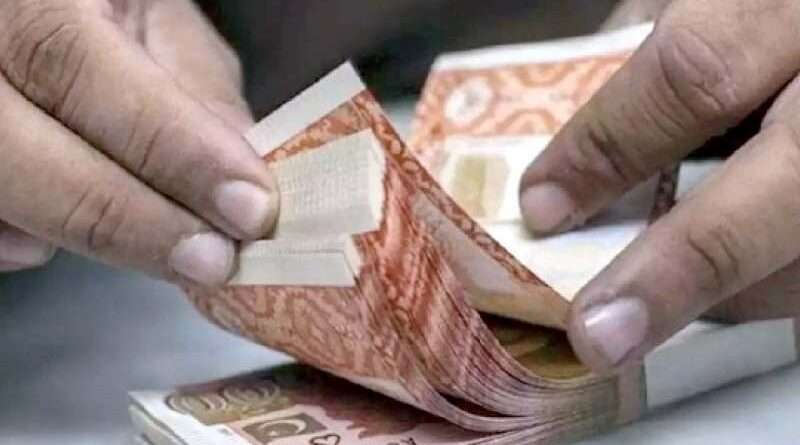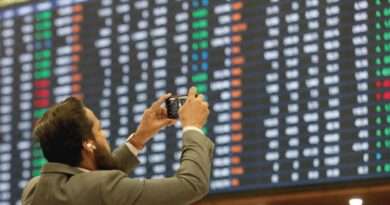Surge in Private Sector Financing: An In-Depth Analysis
|
Getting your Trinity Audio player ready...
|
KARACHI: The financing landscape for the private sector in Pakistan has experienced a significant shift. By October 25, 2024, bank financing to businesses surged to 44% of deposits, up from 39% in September. This increase coincides with the government’s legal efforts to vacate a stay order against an additional 15% tax on financial institutions. This detailed analysis explores the implications, trends, and future outlook of this financial phenomenon.
Background and Context
The Legal Battle Over Additional Tax
The Islamabad High Court (IHC) granted a stay order against the imposition of a 15% additional tax on financial institutions failing to meet a 50% financing target by December 31, 2024. The government, facing pressure to meet International Monetary Fund (IMF) targets, has appealed to the Supreme Court to overturn this decision.
Impact on Advance-to-Deposit Ratio (ADR)
According to the State Bank of Pakistan (SBP), the ADR increased significantly from 39% in September to 44% by the end of October. This rise is primarily attributed to an 11% increase in bank advances to the private sector, reaching Rs13.4 trillion.
Factors Contributing to the Surge
Decline in Deposits
JS Global reported a 3% decline in total bank deposits in October, reducing them to Rs30.5 trillion. This reduction in deposits has automatically improved the ADR.
Strategic Lending by Banks
Banks have adopted strategic lending practices to meet the ADR target, offering financing at Karachi Inter-bank Offered Rate (Kibor) minus 12%, effectively reducing the interest rate to around 3-4%. They are extending credit to sister companies and trusted corporate clients, with an understanding that these funds will be returned shortly after the year-end target date.
Government’s Response and Future Implications
Federal Board of Revenue (FBR) Strategy
The FBR has announced plans to calculate the ADR on an annual average basis starting in 2025. This change aims to encourage sustained private sector financing throughout the year, rather than a temporary surge to meet year-end targets.
Expected Revenue from Additional Tax
The government estimates that the additional tax could generate around Rs100 billion in revenue from banks, with some projections suggesting it could be as high as Rs197 billion.
Currency Market Dynamics
Rupee Depreciation Against the Dollar
The Pakistani rupee has crossed Rs278 against the US dollar in the inter-bank market, marking a two-month low. Despite positive developments such as a $500 million financing package from the Asian Development Bank (ADB) and a $3 billion investment announcement from Azerbaijan, the rupee has depreciated by Rs0.37 over three days, closing at Rs278.04/$ in the inter-bank market and Rs278.99/$ in the open market.
Factors Influencing Currency Value
The depreciation is primarily driven by increased demand for dollars for import payments. However, the market has largely ignored the positive financial inflows from international sources.
Frequently Asked Questions (FAQs)
What is the advance-to-deposit ratio (ADR)?
The ADR is a measure of a bank’s loans (advances) as a percentage of its deposits. It indicates how much of the deposits are being used to finance the private sector.
Why did the ADR increase significantly in October 2024?
The ADR increased due to a combination of rising bank advances to the private sector and a decline in total deposits. Strategic lending to meet government targets also contributed to this rise.
What is the government’s additional tax on financial institutions?
The additional tax is a 15% levy on financial institutions that fail to achieve a 50% ADR by December 31, 2024. The government aims to encourage more financing to the private sector through this measure.
How is the depreciation of the Pakistani rupee impacting the economy?
The depreciation of the rupee increases the cost of imports, contributing to inflation. However, it also makes exports cheaper and potentially more competitive internationally.
What steps is the government taking to ensure sustained private sector financing?
The government, through the FBR, plans to calculate ADR on an annual average basis from 2025. This aims to promote consistent financing to the private sector throughout the year, rather than a temporary surge to meet specific targets.
Conclusion
The significant increase in private sector financing by Pakistani banks reflects a strategic response to government policies and legal pressures. While this surge has improved the ADR, it also underscores the need for sustained financing practices to support long-term economic growth. The depreciation of the rupee, despite positive international financial inflows, highlights the complexities of currency market dynamics. As the government and financial institutions navigate these challenges, the focus remains on fostering a stable and supportive environment for private sector growth.




